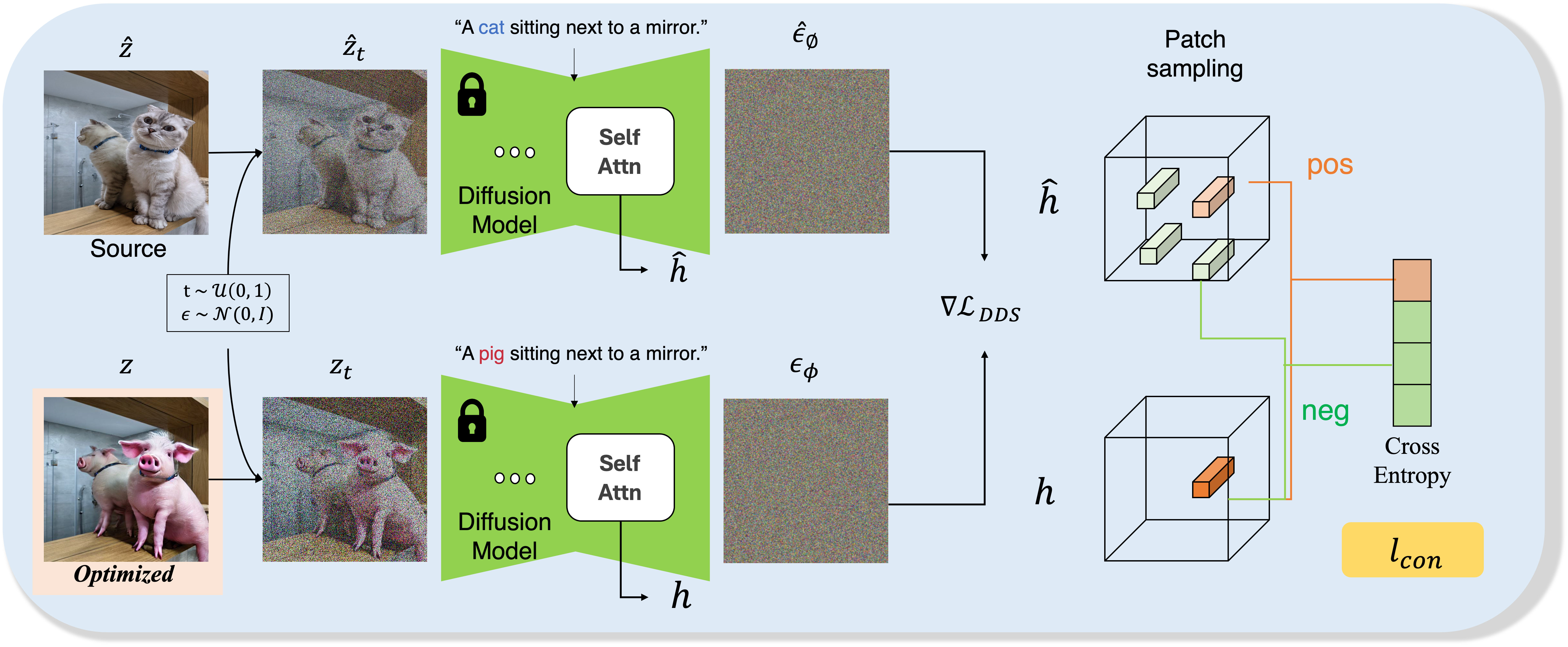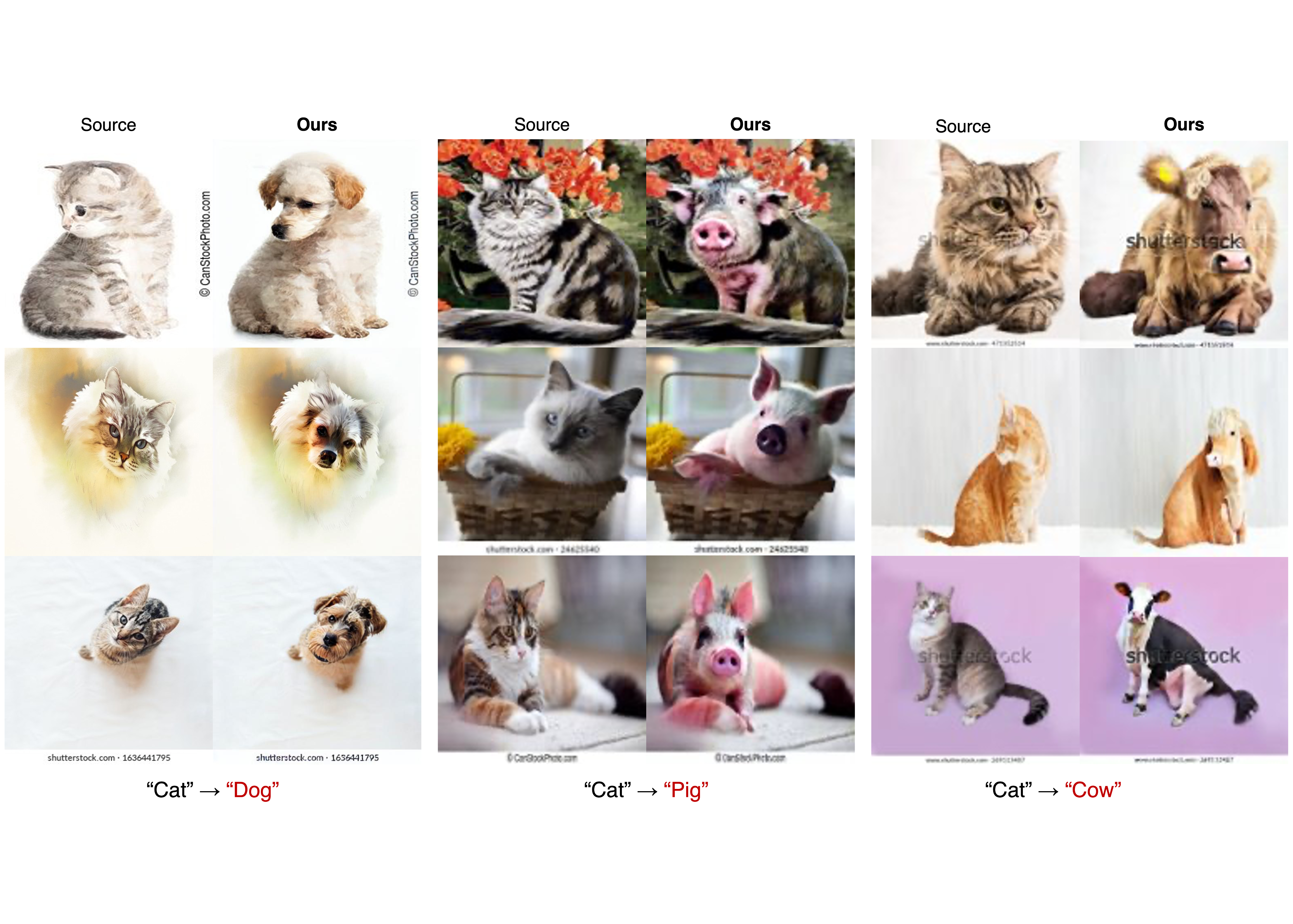With the remarkable advent of text-to-image diffusion models, image editing methods have become more diverse and continue to evolve. A promising recent approach in this realm is Delta Denoising Score (DDS) - an image editing technique based on Score Distillation Sampling (SDS) framework that leverages the rich generative prior of text-to-image diffusion models. However, relying solely on the difference between scoring functions is insufficient for preserving specific structural elements from the original image, a crucial aspect of image editing. Inspired by the similarity and importance differences between DDS and the contrastive learning for unpaired image-to-image translation (CUT), here we present an embarrassingly simple yet very powerful modification of DDS, called Contrastive Denoising Score (CDS), for latent diffusion models (LDM). Specifically, to enforce structural correspondence between the input and output while maintaining the controllability of contents, we introduce a straightforward approach to regulate structural consistency using CUT loss within the DDS framework. To calculate this loss, instead of employing auxiliary networks, we utilize the intermediate features of LDM, in particular, those from the self-attention layers, which possesses rich spatial information. Our approach enables zero-shot image-to-image translation and neural radiance field (NeRF) editing, achieving a well-balanced interplay between maintaining the structural details and transforming content. Qualitative results and comparisons demonstrates the effectiveness of our proposed method.




